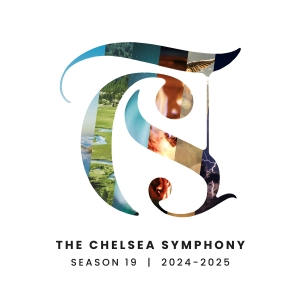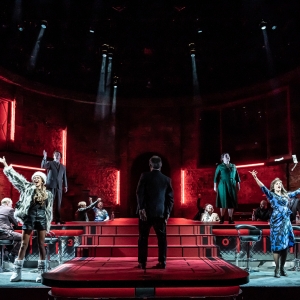
At a Glance
Time Needed: 240 min.
Ages: All
Allows Food/Drink: No
Luggage Storage: No
Central Park West & 79th St, New York, NY 10024 Get Directions
American Museum of Natural History Videos
Why do humans have the bulk of our hair on our heads, not our bodies? This important evolutionary question is central to the work of Tina Lasisi, a biological anthropologist at the University of Southern California. In this SciCafe, Lasisi will tease out the mysteries behind why humans have scalp hair and why we may have developed different hair textures as we’ve evolved. #anthropology #humanevolution #hair SciCafe: At the Root of Human Hair is presented in collaboration with The Leakey Foundation. This video and all media incorporated herein (including text, images, and audio) are the property of the American Museum of Natural History or its licensors, all rights reserved. The Museum has made this video available for your personal, educational use. You may not use this video, or any part of it, for commercial purposes, nor may you reproduce, distribute, publish, prepare derivative works from, or publicly display it without the prior written consent of the Museum. © American Museum of Natural History, New York, NY
Be transported into nature’s hidden realms—from the depths of the ocean to the DNA strands in all living organisms. Invisible Worlds is a new 360-degree immersive experience opening May 4, 2023, as part of the Richard Gilder Center for Science, Education, and innovation at the American Museum of Natural history. Housed in a custom venue, Invisible Worlds is the latest presentation innovation, part of the Museum’s long tradition of transporting visitors across the world via its iconic habitat dioramas and throughout the universe in its science-visualization-driven Hayden Planetarium Space Shows. Just as the 180-degree planetarium dome creates the experience of looking up at the night sky, Invisible Worlds is designed to evoke the relationship humans have within nature—vast and ever-changing—in a wide, oval space with 23-foot-high walls and a mirrored ceiling that surrounds visitors with projections at all scales. At key moments, visitors are drawn into the story as their own movements affect the images around them. For more about the Gilder Center, visit http://amnh.org/gildercenter. © American Museum of Natural History, New York
Global warming is bringing Earth’s climate system toward dangerous tipping points, with devastating consequences for ecosystems and people. But rapid change goes both ways. Can positive tipping points help rebalance the planet? #EarthDay #ClimateChange #Environment *** Subscribe to our channel http://www.youtube.com/subscription_center?add_user=amnhorg Check out our full video catalog: http://www.youtube.com/user/AMNHorg Facebook: http://fb.com/naturalhistory Twitter: http://twitter.com/amnh Tumblr: http://amnhnyc.tumblr.com/ Instagram: http://instagram.com/amnh This video and all media incorporated herein (including text, images, and audio) are the property of the American Museum of Natural History or its licensors, all rights reserved. The Museum has made this video available for your personal, educational use. You may not use this video, or any part of it, for commercial purposes, nor may you reproduce, distribute, publish, prepare derivative works from, or publicly display it without the prior written consent of the Museum. © American Museum of Natural History, New York, NY
What will fuel the future of civilization? Major advances in energy production, and the urgency of the climate change crisis, are re-shaping the conversation about what we use to power our world: fossil fuels, wind turbines, hydroelectric, solar panels, nuclear fission and nuclear fusion. With the recent breakthrough at Lawrence Livermore National Laboratory (LLNL) National Ignition Facility, nuclear fusion has emerged as a leading candidate. Many see the ability to harness nuclear energy as a clear positive for reducing our impact on global climate, while some are skeptical of its practicality and safety for everyday use. #Energy #ClimateChange #NeildeGrasseTyson #AsimovDebate #ScienceDebate #Technology How will science, engineering, and geopolitics shape how the future of energy unfolds? Join Neil deGrasse Tyson, the Frederick P. Rose Director of the Hayden Planetarium, and our panel of experts from various sectors on this issue for a compelling discussion about today’s energy landscape and what we can expect in the future. Watch all the past Asimov debates: https://www.youtube.com/watch?v=2w1IwRFyfrM&list=PLrfcruGtplwGKzxDI_Ne06NlpOKt-yonZ For a full transcript of the debate, visit: https://www.amnh.org/explore/amnh.tv 2022 Isaac Asimov Memorial Debate: Space Pollution https://youtu.be/2w1IwRFyfrM 2020 Isaac Asimov Memorial Debate: Alien Life https://youtu.be/xgESzc3hc2U 2018 Isaac Asimov Memorial Debate: Artificial Intelligence https://youtu.be/gb4SshJ5WOY 2017 Isaac Asimov Memorial Debate: De-Extinction https://youtu.be/_LnAtMeSVeY 2016 Isaac Asimov Memorial Debate: Is the Universe a Simulation? https://youtu.be/wgSZA3NPpBs 2015 Isaac Asimov Memorial Debate: Water, Water https://youtu.be/FSF79uS3t04 2014 Isaac Asimov Memorial Debate: Selling Space https://youtu.be/GbmFeEIKBFI 2013 Isaac Asimov Memorial Debate: The Existence of Nothing https://youtu.be/1OLz6uUuMp8 2012 Isaac Asimov Memorial Debate: Faster Than the Speed of Light https://youtu.be/5qlLW60wOjo 2011 Isaac Asimov Memorial Debate: The Theory of Everything https://youtu.be/Eb8_3BUHcuw 2023 Asimov Panelists: Peter Keleman Arthur D. Storke Memorial Professor, Department of Earth and Environmental Sciences, Columbia University Olivia Lazard Fellow, Carnegie Europe Tammy Ma Lead, Internal Fusion Energy (IFE) Initiative, Lawrence Livermore National Laboratory Anna Shpitsberg Deputy Assistant Secretary for Energy Transformation, U.S. Department of State David Wallace-Wells Columnist, New York Times The late Dr. Isaac Asimov, one of the most prolific and influential authors of our time, was a dear friend and supporter of the American Museum of Natural History. In his memory, the Hayden Planetarium is honored to host the annual Isaac Asimov Memorial Debate—generously endowed by relatives, friends, and admirers of Isaac Asimov and his work—bringing the finest minds in the world to the Museum each year to debate pressing questions on the frontier of scientific discovery. Proceeds from ticket sales of the Isaac Asimov Memorial Debates benefit the scientific and educational programs of the Hayden Planetarium. *** Subscribe to our channel http://www.youtube.com/subscription_center?add_user=amnhorg Check out our full video catalog: http://www.youtube.com/user/AMNHorg Facebook: http://fb.com/naturalhistory Twitter: http://twitter.com/amnh Tumblr: http://amnhnyc.tumblr.com/ Instagram: http://instagram.com/amnh This video and all media incorporated herein (including text, images, and audio) are the property of the American Museum of Natural History or its licensors, all rights reserved. The Museum has made this video available for your personal, educational use. You may not use this video, or any part of it, for commercial purposes, nor may you reproduce, distribute, publish, prepare derivative works from, or publically display it without the prior written consent of the Museum. © American Museum of Natural History, New York, NY
Share in the excitement of discovery with new exhibition galleries, an immersive experience, classrooms, and more. Encounter spectacular architecture in a distinctive new building, designed by Studio Gang, that connects the Museum’s campus and creates a new entrance on Columbus Avenue. The Richard Gilder Center for Science, Education, and Innovation is now open! For more about the Gilder Center, visit http://amnh.org/gildercenter. © American Museum of Natural History, New York
What makes the trilobite fossils on a remote island in Canada so important? Join paleontologist Melanie Hopkins as she and her team ford rivers on an island off the shores off Quebec, Canada, in search of traces of Earth’s first mass extinction on Anticosti Island. #trilobite #museum #fossil #paleontology #canada In August 2022, Museum Curator Melanie Hopkins and colleagues traveled to Anticosti Island in Quebec, which preserves unique fossil deposits that form a record of how marine invertebrate species, including triolobites, crinoids, and brachiopods, responded to the first mass extinction. Hopkins, who has been working in Anticosti since 2017, describes what clues these fossils may hold for future study. Watch to learn more! The Constantine S. Niarchos expedition featured here was generously supported by the Stavros Niarchos Foundation (SNF).
More in The Upper West Side
More Museums
- The Tenement Museum
- New Museum
- International Center of Photography
- Museum at Eldridge Street
- National Museum of the American Indian
- National September 11 Memorial & Museum
- The Rubin Museum of Art
- Whitney Museum of American Art
- The Morgan Library & Museum
- Museum of Modern Art (MoMA)
American Museum of Natural History Frequently Asked Questions
The closest subway stops to the American Museum of Natural History at Central Park West & 79th St are:
1. 81st Street-Museum of Natural History Station - This station is located right next to the museum, making it the most convenient option. It is served by the B and C trains.
2. 79th Street Station - This station is a short walk away from the museum. It is served by the 1 train.
Both of these subway stops provide easy access to the museum and are well-connected to other parts of the city.
While you're in the area, I highly recommend exploring Central Park, which is right across the street from the museum. It's a beautiful oasis in the middle of the city and offers various activities such as walking, biking, and picnicking. You can also visit other iconic attractions nearby, such as the Strawberry Fields memorial dedicated to John Lennon and the Central Park Zoo.
For the latest subway updates and service changes, I recommend checking the official website of the Metropolitan Transportation Authority (MTA) at https://new.mta.info/. This will provide you with real-time information on any delays or disruptions that may affect your travel plans.
The closest bus stops to the American Museum of Natural History at Central Park West & 79th St in New York City are:
1. Central Park West/W 79 St: This stop is served by the M10 bus. You can check for updates on the M10 bus schedule [here](http://bustime.mta.info/m/index?q=101189).
2. Central Park West/W 81 St: This stop is served by the M10 and M79-SBS buses. You can check for updates on the M10 bus schedule [here](http://bustime.mta.info/m/index?q=101191) and the M79-SBS bus schedule [here](http://bustime.mta.info/m/index?q=101193).
Please note that bus schedules and routes may be subject to change, so it's always a good idea to check for updates before your visit. Enjoy your trip to the American Museum of Natural History!
The American Museum of Natural History is a treasure trove of knowledge and exhibits, so it's easy to get lost in all the wonders it has to offer. Ideally, you should plan to spend at least half a day exploring this incredible museum. With over 45 exhibition halls, including the iconic Hall of Dinosaurs and the Rose Center for Earth and Space, there is so much to see and learn.
If you're a science enthusiast or have a particular interest in a specific area, you might want to allocate even more time to fully immerse yourself in the exhibits. Additionally, the museum often hosts special exhibitions and shows, so make sure to check their website for any temporary attractions that might catch your interest.
Remember, the American Museum of Natural History is a popular destination, so it's a good idea to arrive early to beat the crowds and make the most of your visit. Don't forget to grab a map at the entrance to help navigate your way through the museum's vast collection. Enjoy your time exploring the wonders of the natural world!
The American Museum of Natural History in New York City has a food and drink policy that allows visitors to bring their own food and beverages into the museum. However, please note that food and drinks are not permitted in exhibition halls or theaters. There are designated areas within the museum where you can enjoy your snacks and meals, such as the food court located on the lower level. Additionally, the museum has several cafes and a restaurant where you can purchase food and drinks if you prefer not to bring your own. Just remember to be respectful and clean up after yourself to help maintain the museum's cleanliness. Enjoy your visit to the American Museum of Natural History!
The American Museum of Natural History in New York City does not offer luggage storage facilities for visitors. For security reasons, backpacks, suitcases, and other large bags are not permitted inside the museum. However, you can find several luggage storage services near the museum where you can securely store your belongings while you explore the exhibits. These services typically charge a fee based on the size and duration of storage. Just a friendly reminder, it's always a good idea to travel light and leave large bags at your accommodation whenever possible to make your visit to the museum and other attractions more enjoyable.
Absolutely! The American Museum of Natural History is a fantastic destination for visitors from other countries and non-English language speakers. The museum offers multilingual exhibits, audio guides, and written materials in various languages, including Spanish, French, German, Italian, Japanese, Mandarin, and more. This ensures that everyone can fully enjoy and understand the exhibits, regardless of their language proficiency.
The museum's exhibits are visually captivating and offer a wealth of information about the natural world, history, and culture. From the iconic dinosaur fossils in the Hall of Saurischian Dinosaurs to the stunning dioramas in the Hall of North American Mammals, there is something for everyone to marvel at.
Additionally, the museum frequently hosts special exhibitions that cover a wide range of topics, from ancient civilizations to space exploration. These exhibitions often include interactive displays and multimedia presentations, making them engaging for visitors of all ages and language backgrounds.
If you're planning a visit to the American Museum of Natural History, I highly recommend checking their website for information on current exhibitions and any language-specific services they may offer. It's a must-see attraction for anyone interested in science, history, and the wonders of the natural world.
The American Museum of Natural History in New York City is a fantastic destination for visitors of all ages! While it is particularly popular among families with children, people of all ages can enjoy the museum's exhibits and displays. The museum offers a wide range of interactive exhibits, fascinating artifacts, and educational programs that cater to both kids and adults. Whether you're a curious child or a lifelong learner, you'll find something to pique your interest at the American Museum of Natural History. So, don't hesitate to bring your family or explore the museum on your own – it's an experience you won't want to miss!
Videos
















